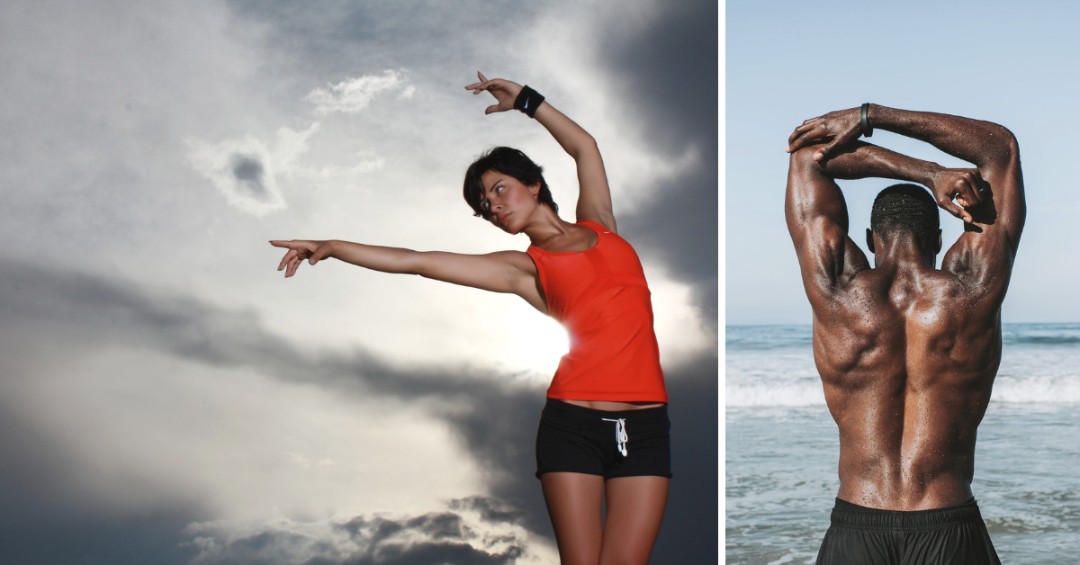Having a good posture allows our muscles to work more efficiently, which helps us walk, stand, sit, and lie with less fatigue. A proper postural help prevents strain on supporting muscles and ligaments during movements.
Keeping that in mind, it is undeniably beneficial to maintain a good posture. Even so, we’re not living in a perfect world and we don’t consciously maintain proper posture.
In this article, we will work on improving your body postures. We hope that these 6 exercises will give you guidelines to break your old poor postural habits.
For some of us, all it takes in getting the motivation for a tough workout is a pair of shoes, some good music and a sufficient exercise area. However, many require workout accessories to help us. That’s why choosing the best workout accessories will be a big help.
Maintaining a Good Posture
Ever wonder why we don’t simply fall down to the ground whilst we’re walking and even sitting? Our muscles are not enough to control our movements, therefore, posture is vital because it holds our bodies while standing, sitting, or lying down.
Without it, we would simply fall to the ground. Considering that our certain muscles do it for us, we sometimes tend to forget the importance of maintaining a good posture.
Important Muscles in Maintaining Good Posture
- Several muscle groups
- Hamstrings
- Large back muscles
Postural movements maintain our posture and balance movement whiles the ligaments help to hold the skeleton together.
6 Exercises for Better Posture
According to WebMD, the best way to improve your posture is to focus on exercises that strengthen your core. The abdominal and low back muscles that connect to your spine and pelvis.
Here are the exercises you can do to improve your body posture. The following exercises below are courtesy of WebMD.
1. Core Stabilizer: Single Leg Extension
This move trains your core muscles to work together to stabilize your pelvis. For your starting position, lie on your back with your knees bent, feet flat on the floor, and hands behind your head.
Press your low back into the floor, and curl your head up off the floor. Then pull both knees into your chest, then extend both legs straight at about a 45-degree angle.
Using your core to keep your lower back on the floor. Or, as you extend your legs, extend both arms overhead, reaching in the opposite direction from your legs.
Switch legs. Start with five to 10 extensions on each side.
2. The New Crunch
This one is also called a “curl-up”. This exercise works the rectus abdominis, the six-pack muscle, and obliques, which run diagonally around your waist and rotate your torso.
For your starting position, lie on your back with your knees bent, feet flat on the floor. Press your low back into the floor.
Place your hands behind your head, or reach your arms toward your knees if it doesn’t create too much tension in your neck. Extend one leg straight at a 45-degree angle to the ceiling.
Or hold both legs off the floor, knees bent, with your shins parallel to the floor. Repeat three times.
3. Pilates Roll-Up / Yoga Sit-Up
This move works the rectus abdominis, obliques, and transverse abdominis (the deepest core muscles that wrap around your waist like a corset and pull your abdomen inward and upward toward your spine.) For your starting position, lie on your back with your legs straight, your feet flexed, and your arms reaching overhead on the floor.
Press your lower back into the floor. Repeat three to five times, adding more as your core gets stronger.
4. Crossover
This exercise works all the core muscles, focusing on the obliques. For your starting position, lie on your back with your hands behind your head, your chest lifted off the floor, knees pulled into your chest.
Keep your low back pressed into the floor. The closer your straight leg is to the floor, the harder the work for your core.
Try extending your leg just inches off the floor, making sure your lower back stays on the floor. Repeat five to 10 times, adding more as your core gets stronger.
5. Cobra Pose: Back Extension
This move strengthens the erector spinae (the back muscles that extend your spine and prevent slouching) and other low back muscles. For your starting position, lie on your stomach with palms flat on the floor near your ribs.
Extend your legs straight behind you, and press the tops of your feet into the floor. Reach your arms long beside your head. Keep your elbows straight.
Repeat three to five times, adding more as your lower back gets stronger.
6. Plank Pose
This exercise strengthens the obliques and transverse abdominis, as well as your shoulder and back muscles. For your starting position, Begin on your hands and knees with your palms under your shoulders.
Extend both legs straight behind you, toes tucked under, into a position like the top of a pushup. Pull your abdominal muscles in to prevent a “sway back,” and gaze down at the floor.
Balance on your forearms instead of your hands. Hold the plank until you start feeling fatigued.
Rest and then repeat. Keep your abdominals pulled in and up, so your lower back doesn’t sag as you exhale.
Make these posture-boosting exercises a regular part of your routine. Remember the key principle in both Pilates and yoga: exhale strongly and pull in your core muscles as you work.
